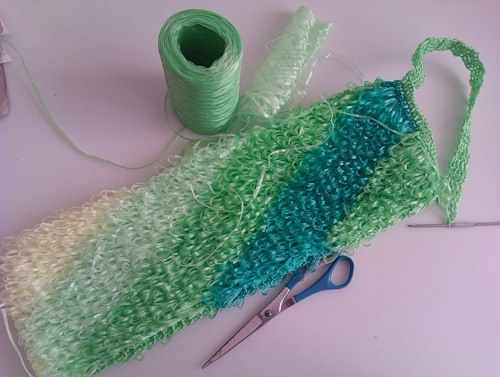You will need
- - thread crochet washcloths (can be colored) – two rolls;
- - crochet hook No. 2.
Instruction
1
Tie a chain of 41 air loop. Note that you can knit a washcloth need in two lines. Tie the two hanging loops of the lift and on to the end of the chain polostevichi with nakida. It will be one pen washcloths.
2
Tie another 10 loops and connect the two ends of the handle in three columns without nakida. Next - the main part of the washcloth. Provarite three rows of columns without nakida (every row has 16 loops). Between the rows make one air loop lifting.
3
Then provarite 50 rows according to the following algorithm: do one elongated loop, with one column without nakida. This rapport needs to repeat 8 times in a row. To obtain an elongated loop, make a yo with the index finger of the right hand and pull the loop towards yourself, then thread the hook into the loop of the previous row. The index finger of the left hand push the loop to the knitting and davaite a column without nakida.
4
After you got 50 rows of the main pattern, proverite, as in the beginning, three rows of columns without nakida (16 loops in row).
5
Then in the next row, make three columns without nakida and knit a chain of forty loops. This is the second handle of the washcloth. Connect the chain with the main part of knitting three columns without nakida. Polostevichi with nakida tie the entire chain. Secure the thread with several columns without nakida and trim it. Now you can safely go to the bath, to try a new loofah.
Note
Improper location of elongated loops washcloth can quickly deform and come into disrepair. That this did not happen, when knitting the main pattern, place the elongated loop and columns without nakida in a checkerboard pattern, and then Vigoda will serve not one year.
Useful advice
Crochet washcloths use of artificial filaments, mainly nylon. But if the sponge will be too hard, you're going to blast it with boiling water – the strings will be softer.
